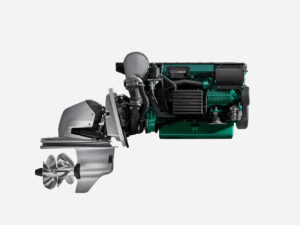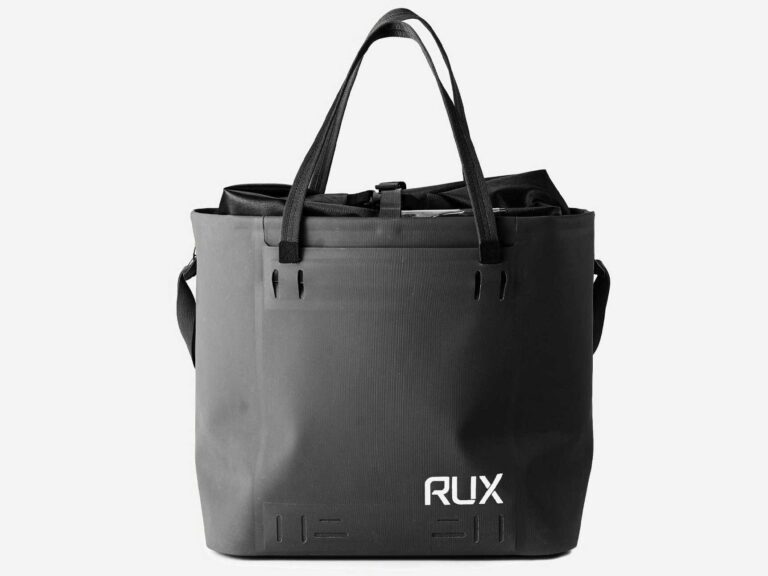We noticed that a great number of readers swing a fishing rod nearly as often as they swing a helm. At the same time, sitting next door to our sister publications Sport Fishing and Saltwater Sportsman, we see there is an extraordinary number of choices for anglers in fillet knives — far more than the days when a Finnish Rapala knife clattered in the bottom of a tackle box.
So, with blades costing as much as $60 and seafood too expensive to waste a bite, we wanted to know which knife was most adept at rendering fillets.

Penn 7-inch Standard Flex Fillet
Blade: The flexible blade’s German stainless steel is ground to a 24-degree beveled edge. A 168-hour salt-spray test shows its nickel-titanium coating protects the blade’s back and sides from corrosion. The blade is coated for rust protection.
Grip: Oval in shape with a distinct blade guard, the handle is heavily contoured and molded with soft rubber over polymer.
In the Box: A durable polymer sheath with swivel belt clip holds it in position, and a press on the thumb grip releases the snap latch.
Best For: Recreational fishing applications with smaller fish with finer bones. It’s excellent for skinning, but our cutters’ orders called for skin-on fillets. The blade’s flex can be handy when the size of the fish prevents one’s hand from getting the blade level with the fish’s spine.
Cutters’ Remarks: Jose felt the edge had good sharpness but too much flex.
Strokes to cut ½-inch hemp: 1.6
Strokes to cut hemp after resharpening: 1
Strokes to resharpen: 12
Sharpness after honing: Good
Slip resistance: Good
Corrosion resistance: Good (did not impact cutting; honed away about half in sharpening)

Sharpness: 2/3
Slip Resistance: 2/3
Corrosion Resistance: 2/3

Titan Technologies 7-inch Curved
Blade: Titanium with a tungsten carbide-bonded laminate ground to a convex edge, the laminated carbide edge wears inward as the blade cuts to promote self-sharpening. This was a relentless rope cutter.
Grip: Glass-filled polymer handle is substantial with an oval shape for easy gripping and angle control. A flat metal plate at the blade’s tang deflects bones and spines. Grip was unimpacted by the dish soap.
In the Box: Ballistic fabric sheath with hard interior shell is built for the bench.
Best For: All fish, especially with heavy rib bones, as well as commercial cutting.
Cutters’ Remarks: Jose and Justin agreed this was the most ergonomically helpful handle, promoting a secure, controlled grip that let them power the sharp blade. This was Jose’s go-to blade during the test, but he would’ve preferred more of a drop point than a trailing point — the option is available.
Strokes to cut ½-inch hemp: 1
Strokes to cut hemp after resharpening: 1
Strokes to resharpen: 6
Sharpness after honing: Best
Slip resistance: Best
Corrosion resistance: Best (Actually, none at all! The colored edge is the tungsten carbide.)
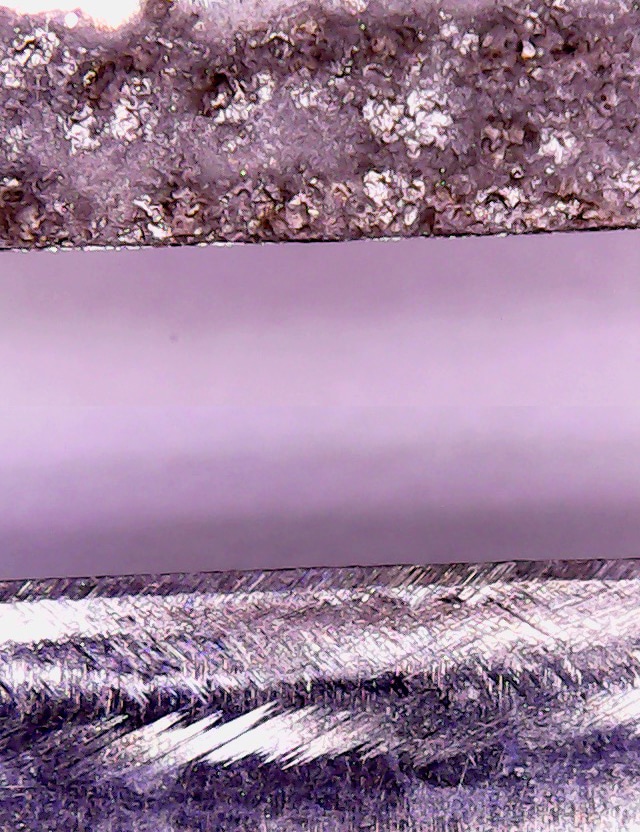
Sharpness: 3/3
Slip Resistance: 3/3
Corrosion Resistance: 3/3

Marttiini 7½-inch Kitchen
Blade: Highly polished stainless steel, honed to a double convex edge, is curved to work around bones and pointed to plunge through skin along spines. It has just enough spine for cutting ribs and enough flex for easy skinning. This is a popular blade shape among anglers.
Grip: Its diamond-knurled hard-rubber grip and prominent finger guard give excellent friction for control and safety. Jose said it was small but secure for his large, muscular hands.
In the Box: The blade is not packaged with a sheath.
Best For: Small to large fresh- or saltwater fish; optimum flexibility for skinning and enough stiffness for cutting ribs.
Cutters’ Remarks: Jose and Justin both preferred a strong upward-curved tip reaching up to the spine to slice into the skin along the backbone. The point is better suited to plunge cuts.
Strokes to cut ½-inch hemp: 1.1
Strokes to cut hemp after resharpening: 1
Strokes to resharpen: 15
Sharpness after honing: Best
Slip resistance: Good
Corrosion resistance: Good (suffered the most corrosion in our test but didn’t affect performance)
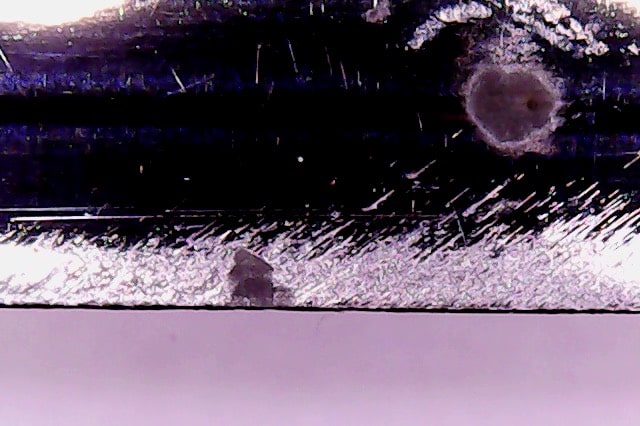
Sharpness: 3/3
Slip Resistance: 2/3
Corrosion Resistance: 2/3

Sog Bladelight Fillet 7½-inch
Blade: Made of 8CR13MOV stainless steel, the knife is similar in strength to the Australian standard AUS8 most commonly used in Sog knives, and it’s hardened to RC 56-61 and honed to a flat bevel. It has optimum flex for skinning without tearing and good stiffness for anglers facing a broad array of species.
Grip: With molded rubber around a nylon frame, this handle has a trick: One AAA battery powers six LED lights aimed toward the blade work. The on/off switch is waterproof. Rounder in nature than the other handles, it requires more pressure to hold the blade angle.
In the Box: Its nylon sheath boasts a line-cutting slot and a knife sharpener.
Best For: Smaller fish with easily cut ribs; the light is effective for night use.
Cutters’ Remarks: The handle grip was too round to add control when slime weakened the grip. The lights weren’t needed in the shop, but were well aimed to assist in poorly lit camps.
Strokes to cut ½-inch hemp: 1.4
Strokes to cut hemp after resharpening: 1
Strokes to resharpen: 20
Sharpness after honing: Good
Slip resistance: Good
Corrosion resistance: Good (most, but not all, was removed in honing)

Sharpness: 2/3
Slip Resistance: 2/3
Corrosion Resistance: 2/3

Cuda 7-inch WideFillet
Blade: Made of 4116 German stainless steel, this wide blade is high in titanium for corrosion resistance and edge-holding qualities. It’s honed to a flat bevel for easy resharpening and nicely curved for working around rib bones.
Grip: A combination of clear hard plastic (you can see the full tang through it) and uniquely contoured grippy, scaled rubber gives a strong grip, but its the shape that gives good control of the cutting angle.
In the Box: Cuda knives are packaged without sheaths for bench work and priced well for commercial applications.
Best For: Its stiff back offers plenty of power for cutting through tough rib cages on snapper, mahi and kingfish.
Cutters’ Remarks: It proved slippery in our soap test, but Justin found the handle’s holes gave secure purchase for the thumb and forefinger. It was his favorite blade of the test due to good ergonomics and a relatively stiff blade. He kept coming back to this one.
Strokes to cut ½-inch hemp: 1
Strokes to cut hemp after resharpening: 1
Strokes to resharpen: 12
Sharpness after honing: Best
Slip resistance: Best
Corrosion resistance: Best (only one spec occurred near the grip)

Sharpness: 3/3
Slip Resistance: 3/3
Corrosion Resistance: 3/3
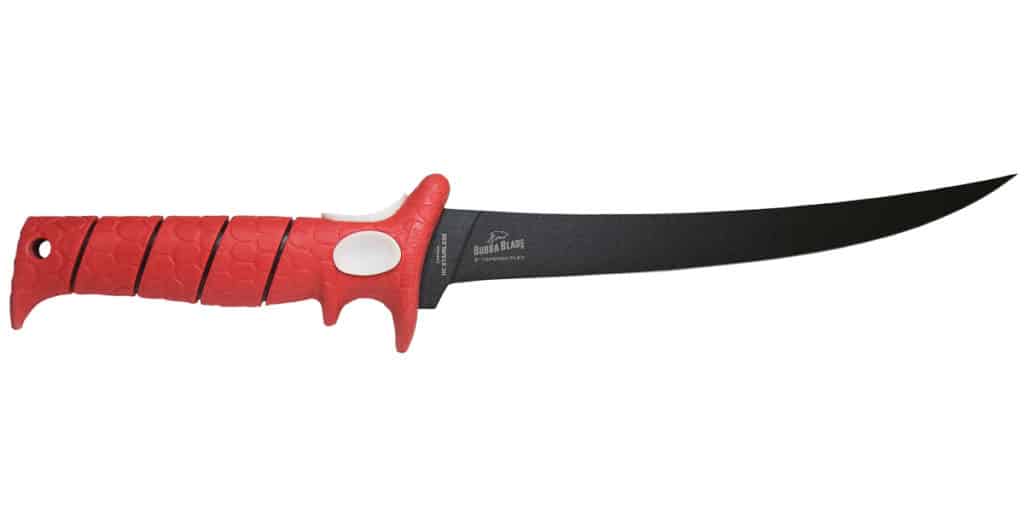
Bubba Blade 9-inch Tapered Flex Fillet
Blade: High-carbon hard (RC 56-58) stainless steel honed to a flat bevel, the blade is nonstick-coated for easy cleaning and corrosion protection. It flexes nicely for skinning but has surprising backbone for cutting ribs.
Grip: Only the Titan blade has a grip as large and comfortable to hold. Rubber over polymer, the oval handle’s size fits big hands, plus features a prominent finger and thumb guard and cups for the thumb and forefinger for maximum blade-angle control.
In the Box: Ballistic cloth sheath with belt loop and hook-and-loop holder.
Best For: Big fish, salt or fresh water; curved for boning and ideal for kings, mahi and amberjack. Its stiffer blades would be better for snapper or grouper.
Cutters’ Remarks: The handle shape and size made up for material that was slippery when soapy or slimy. Justin used the finger cups on the handle sides, while Jose liked the thumb grip. Both would’ve preferred the 9-inch Stiffie.
Strokes to cut ½-inch hemp: 1
Strokes to cut hemp after resharpening: 1
Strokes to resharpen: 10
Sharpness after honing: Best
Slip resistance: Best
Corrosion resistance: Best (slight corrosion was easily honed away)

Sharpness: 3/3
Slip Resistance: 3/3
Corrosion Resistance: 3/3
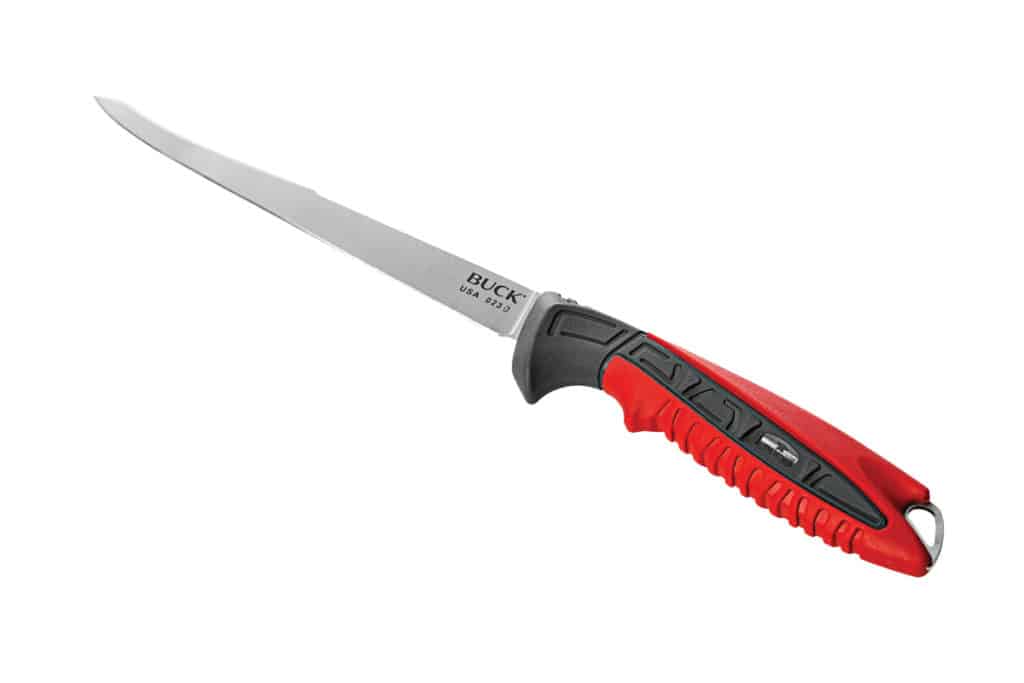
Buck Knives Clearwater
Blade: The 6-inch blade is made of 420HC (high carbon) stainless steel hardened to a Rockwell hardness factor of RC 58. It combines a durable, sharp V-grind edge with corrosion resistance and easy resharpening characteristics. The blade’s back is sharpened to cut ribs while preserving the main blade for boning and skinning.
Grip: Molded nylon with rubber covers the skeleton, and a hard nylon bolster and finger grip add safety. There is a wrist lanyard loop on the tang end.
In the Box: The knife snaps firmly into an injection-molded sheath with drain holes.
Best For: Panfish to walleye, smallmouth bass and trout; snapper and seatrout. It’s an excellent skinner with a good flex level for finer-boned fish.
Cutters’ Remarks: The flexible blade would be useful for skinning or on smaller fish requiring a lighter touch. The grip was small but secure.
Strokes to cut ½-inch hemp: 1
Strokes to cut hemp after resharpening: 1
Strokes to resharpen: 12
Sharpness after honing: Best
Slip resistance: Best
Corrosion resistance: Good (some corrosion persisted after honing; the edge was not diminished)

Sharpness: 3/3
Slip Resistance: 3/3
Corrosion Resistance: 2/3
How We Tested
There are no better tool critics than the professionals who use them, so we took our knives to Lombardi’s Seafood, a wholesale and retail operation specializing in hand-cut fresh fish. We asked the fish cutters to use each knife and evaluate it. In addition, we asked if they would use the newly tested knife in place of their everyday work tools.
Sharpness/Edge Holding
The American Bladesmith Society evaluates a blade’s sharpness and durability by cutting ½-inch hemp rope and counting the number of passes through before it becomes noticeably difficult. With these knives, that was clearly going to take a few miles of rope. Instead, we made
12 cuts into a section of hemp, averaging the strokes it took to complete each cut.
Resharpening
We resharpened each blade by first pulling the edge backward over a 400-grit diamond stone until we could feel a burr on the other side. Then we stroked off the burr using 600 grit. We counted the number of strokes required per side.
Sharpness and Honing
We made three cuts after honing, aiming for a single pass per cut and noting ease. We scored them as good (2) or best (3).
Slip Resistance
We soaped up our right hand and gripped each handle while an associate tried to twist and pull it from our grip. We scored the handles as good (2) or best (3).
Corrosion Resistance
After testing, the knives were abused with salt-spray mist every few hours. At the end of 24 hours, they were examined under a microscope for signs of corrosion. We scored the corrosion resistance as good (2) or best (3).
Cutters’ Remarks
Our test cutters, Justin Morris and Jose Olivares, work for Lombardi’s Seafood in Winter Park, Florida. Their fillets find their way to restaurants, meat shops and their own well-stocked seafood store and diner. Because large salmon and red snapper were on the duty roster that day, the thin-blade knives got less of a workout than the stiffer blades. Justin and Jose commented on each after cutting the fish.



